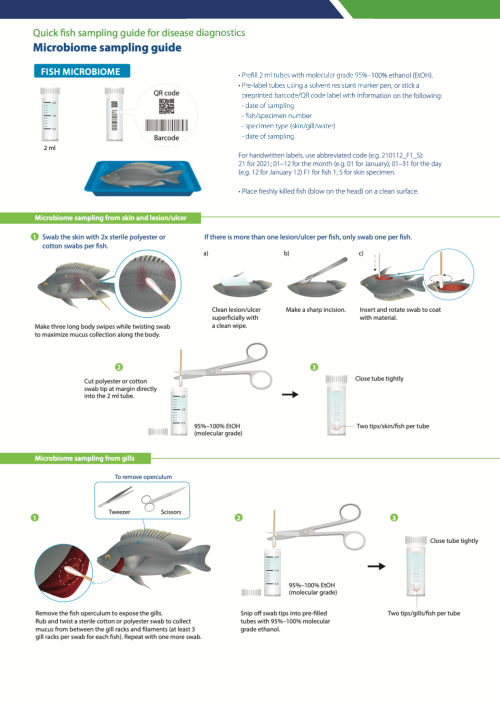Quick fish sampling for disease diagnostics: Microbiome sampling guide
3 February 2024 | Delamare-Deboutteville, J., Ali S.E.S.M., and Chadag V.M. | 771 Downloads | .pdf | 13.28 MB | Health and Biosecurity
Interactions between microbes associated with the host, other organisms present in the system and the environment itself are increasingly recognised to contribute to aquatic animal diseases. Those microbiome assemblages and their functions are extremely diverse and poorly understood. They vary over time in water and between host tissues and organs. High-throughput sequencing technologies (multi-omics) and bioinformatics analysis of complex microbiomes can provide biological insights offering new opportunities for early detection of pathogens and disease mitigation strategies. Similarly, such approaches are being applied to study the effect of locally available ingredients for use in fish feeds and their impact on fist gut microbiome and the health of the pond environment—optimising the growing conditions on-farm. WorldFish and partners developed this quick guide for microbiome sampling from fish skin/gills mucus swabs, internal organs (e.g. gut) and water samples from ponds, hatcheries tanks, river, and canals.
A free online training course on microbiome sampling is also available on Learn.ink.
Creative Commons Attribution-NonCommercial.

